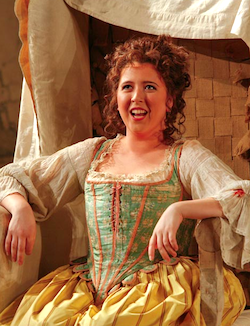With the release of Renée Fleming's new Christmas-themed recording, Decca Classics now releases a video featuring performance clips of selections from the album. "Following her acclaimed performance at Super Bowl XLVIII, America’s favourite soprano Renée Fleming releases her first-ever holiday album, Christmas In New York. The album celebrates the sparkle and sophistication of the beloved Christmas season in New York City, with music conjuring such iconic scenes as the holiday windows lining 5th Avenue, the Christmas Tree at Rockefeller Center and carriage rides in Central Park. A richly collaborative album, Christmas in New York finds Renée Fleming singing with a relaxed intimacy and freedom distinct from her soaring classical voice. Holiday evergreens and nostalgic favorites are both featured with fresh arrangements, joined by a wish list of guests from jazz, pop and Broadway including Gregory Porter, Chris Botti, Kurt Elling, Kelli O’Hara, Wynton Marsalis, Brad Mehldau, and Rufus Wainwright. Highlights include 'Have Yourself a Merry Little Christmas,''Silver Bells,''Winter Wonderland,''Sleigh Ride' and 'Central Park Serenade,' a brand new duet by songwriting legend Diane Warren." [Source] To listen to tracks off the album, including the exclusive bonus track available when you purchase the MP3 album, click here. Watch the promotional video, and find some beautiful new publicity photos of Renée Fleming, after the jump.
↧
Renée Fleming Presents A Taste Of Winter Wonderland In New Video
↧
Diana Damrau Dives Into Unfamiliar Territory With Kent Nagano
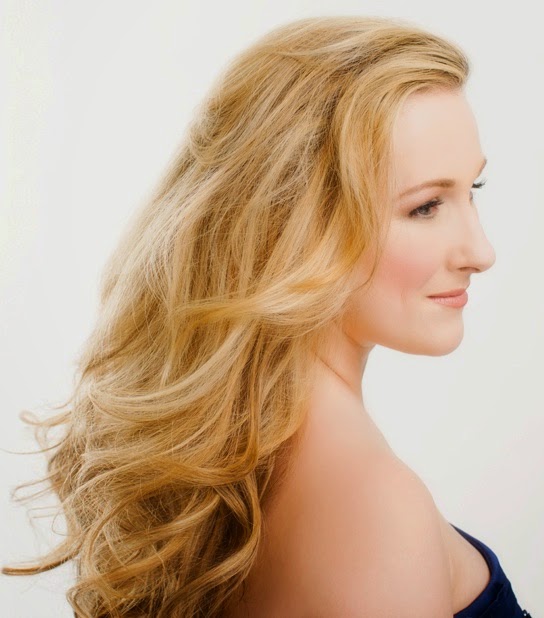 |
| Chant Japonais: Listen to Diana Damrau's interpretation of Japanese songs for children by clicking here and purchase the recording here. |
life, while other songs tell of the strangers coming ashore in Japan. Some tell the stories of Japanese who went overseas to flee the poverty at home. The songs from ancient times have left a deep impression on the American conductor and rekindled his interest in his Japanese roots. Kent Nagano wanted to bring them to public attention by a performance with the Orchestre symphonique de Montréal. His friend, Peter Schmidt, a famous designer from Hamburg, created animated short films to support the musical event." [Source] Read more about the recording, and hear four full tracks off the recording, after the jump.
"Un jour, Kent Nagano écoutait avec attention sa femme qui chantait un air enfantin à sa fille. Celui-ci narrait un chapitre de l’histoire japonaise qui lui était jusque-là inconnu : une histoire d’émotion, de tendresse, d’amour – et d’amertume. Le chant avait été conçu à une période au cours de laquelle le Japon avait dû s’ouvrir à l’Occident, le pays souffrant alors de surpopulation, de famine et de pauvreté. 'Ces chants me sont parvenus très tard. Malgré un héritage japonais, ma famille est venue s’établir en Amérique à la fin du 19e siècle. Trois générations me séparaient du Japon. Je suis descendu déjeuner un matin et ai trouvé ma fille en train d’écouter ces chansons sur un petit magnétophone et ma femme chantait, afin de les lui enseigner.' Karin Kei avait trois ans quand elle est devenue la source d’inspiration d’un des projets les plus ambitieux de son père. Kent Nagano était si touché par les paroles et les sonorités de ces chansons qu’il se mit aussitôt à faire des recherches pour remonter à leurs sources. 'Après un bon moment, je dirais six semaines ou deux mois, alors que j’écoutais chaque matin ces mélodies intrigantes et magnifiques, je me suis rendu compte qu’en raison de ma maîtrise limitée de la langue japonaise, je ne pouvais avoir une compréhension complète de ce dont elles parlaient. J’ai alors demandé à ma fille de m’expliquer les textes. Sa traduction, confirmée par mon épouse, mettait en lumière un recueil de textes à la fois complexes et profondément poétiques, en plus d’être intensément émouvants et bouleversants. Leur beauté mystérieuse et envoutante continue de séduire, toutes générations confondues, depuis leur création. Ils sont ainsi toujours d’actualité et d’une vive pertinence dans notre monde moderne.' Au Japon, les chants qui avaient enchanté maestro Nagano sont connus sous le nom de 'shoka' ou hymnes scolaires. Ils sont basés sur des poèmes japonais célèbres, mais composés dans un style musical occidental. Ces chants ont vu le jour à l’époque de la Restauration de Meiji à la fin du 19e et au début du 20e siècle. À cette époque, le Japon s’était enfin ouvert à l’Occident, après quasi 250 ans de repli. L’état féodal rétrograde s’était transformé en une puissance impériale moderne mondiale. C’est à cette époque de bouleversements économiques et culturels que le ;shoka' pour enfants est né. Les textes traitent parfois du quotidien, à d’autres moments évoquent les étrangers débarquant au Japon. Certains parlent aussi de Japonais ayant vécu outre-mer pour fuir la pauvreté. Ces chants du passé ont fait grande impression au chef américain et ravivé son intérêt pour ses racines japonaises. Kent Nagano souhaitait attirer l’attention du public en les donnant en concert avec l’Orchestre symphonique de Montréal. Son ami Peter Schmidt, célèbre designer de Hambourg, avait alors créé des courts-métrages d’animation pour soutenir le propos musical. Avec l’ouverture du Japon, les missionnaires chrétiens américains et européens sont venus au pays. Des églises ont été construites et sont bientôt devenues le centre de la société, un endroit où les nouvelles chansons pour enfants pouvaient souvent être entendues. La poupée aux yeux bleus vient d’Amérique et est faite de celluloïd. Quand elle arrive au port, ses yeux sont pleins de larmes. 'Je ne comprends rien. Que dois-je faire si je me perds?' Généreuses fillettes japonaises, soyez douces et gentilles quand vous jouez avec elle! Soyez douces et gentilles quand vous jouez avec elle! Les paroles furent d’abord publiées en 1921 dans une revue pour enfants. Un missionnaire américain inspiré par la chanson a eu l’idée de demander aux enfants des États-Unis d’envoyer des 'poupées aux yeux bleus' au Japon en témoignage de leur amitié. Mais en 1941, quand les États-Unis et le Japon sont entrés en guerre, les poupées sont devenues symboles de l’ennemi. Avec leurs grands yeux bleus, elles étaient perçues par les Japonais comme des "espionnes" et la majorité des poupées a été brûlée.
Souliers rouges
Portant des souliers rouges, une jeune fille est partie avec un étranger.
Portant des souliers rouges, une jeune fille est partie avec un étranger.
Du port de Yokohama, à bord d’un bateau, elle est partie avec un étranger.
Le chant enfantin akai kutsu raconte l’histoire d’une fillette adoptée par un missionnaire américain et sa femme, qui les accompagnera de Yokohama aux États-Unis. Écrit en 1921, akai kutsu est l’un des chants enfantins les plus populaires au Japon. Les paroles et la musique transmettent l’envie du lointain, mais aussi la jalousie ressentie envers cette fillette qui a pu se rendre dans 'l’Ouest promis,' portant les souliers rouges. On y perçoit aussi la pitié ressentie pour celle qui habite à l’étranger et s’ennuie du Japon." [Source]
↧
↧
Dimitri Caceaune Photographs Angela Gheorghiu For Christmas CD
As a follow-up to her Romanian holiday album, O, ce veste minunată!, Angela Gheorghiu's latest release, Guardian Angel, is a collection of 11 traditional Christmas carols from around the world. Featured tracks include: “Silent Night,” “White Christmas,” and “O, Tannenbaum.” Two special duets on the recording are "It’s Beginning to Look a Lot Like Christmas” with her daughter Ioana Dan and “I'll Be Home For Christmas” with Romanian pop-star Loredana Groza. "'For years I dreamed of Romanian and international carols recording. Last year the dream came true, Romanian carols CD was released. This year I am happy for my new disc, this time with international carols, which I love as much as the Romanian ones. I kept much as absolutely all the songs on this album to be re-orchestrated especially for my voice. We appealed to musicians in Romania and in the world: Steven Mercurio, Julien Painot and Andrei Tudor, and the result is exceptional,' said Angela Gheorghiu....'Eclectic repertoire is chosen, you will find pieces in English, French, German and even Russian. There are carols everywhere we wanted to include beauties of this music so popular worldwide. Christmas is the favorite holiday
of millions of people who are dreaming and in good faith, in harmony and peace, who want to be close to family and friends....I consider both a gift to the public in Romania, but also for the worldwide" said the soprano.'" The photographs taken for the cover and accompanying publicity materials were taken by Dimitri Caceaune. At 20-years old, the self-taught experimental photographer lives in Bucharest, Romania and prefers to shoot friends over models. Read an interview with the photographer here and see more of his fashion photographs by clicking here. [Source, Source] Complete album cover art is after the jump.
of millions of people who are dreaming and in good faith, in harmony and peace, who want to be close to family and friends....I consider both a gift to the public in Romania, but also for the worldwide" said the soprano.'" The photographs taken for the cover and accompanying publicity materials were taken by Dimitri Caceaune. At 20-years old, the self-taught experimental photographer lives in Bucharest, Romania and prefers to shoot friends over models. Read an interview with the photographer here and see more of his fashion photographs by clicking here. [Source, Source] Complete album cover art is after the jump.
↧
Christine Goerke Converses With OPERA America President
 |
| Eine große neue dramatische Stimme: Christine Goerke discusses new opera repertoire |
 |
| Soprano Christine Goerke with OPERA America President Marc Scorca |
↧
Alyson Cambridge Sings At 2014 Soul Train Awards In Las Vegas
Fresh from performances as Musetta in Puccini's La bohème at Washington National Opera, soprano Alyson Cambridge was in Las Vegas last night to sing at the 2014 Soul Train Awards along such luminaries as Chris Brown, Missy Elliot, Lil' Kim, Bobby Brown, and more. The singer announced the news yesterday on Facebook stating: "Trying to duo [sic] the opera world proud! Bringing legit opera to primetime and then fusing it with hip hop too!" Press release "Chris Brown is set to kick off the 2014 Soul Train Awards, The Hollywood Reporter has learned exclusively. The musician, who leads this year's nominees list with seven nods, will take the Orleans Arena stage in Las Vegas on Nov. 7. Also slated to sing at the annual ceremony are Aloe Blacc, Nico & Vinz, Lisa Stansfield, Kem, Jeremih and Liv Warfield. Jodeci are also set to
reunite for a medley of their hits. Wendy Williams will host the event, airing Nov. 30 at 8 p.m. on Centric and BET networks. The 2014 show will celebrate the history of dance with choreographer Fatima Robinson and her seasoned troupe, as well as producers 1500 or Nothin’ on board as music directors. 'This slate of performances is another example that Soul Train Awards 2014 is the only place where soul music lovers can find the diverse combination of current chart-topping performers and reunions from their favorite hit-making groups,' said Paxton Baker, general manager and executive vp, Centric, in a statement. 'We are pulling out all the stops this year and are thrilled to have Chris Brown and Jodeci lead the big surprises we have in store.' The 2014 Soul Train Awards is directed by Tony McCuin and produced by BET Event Productions and Sunseeker Media. Executive producers include Centric's Baker, Tami Arasli and Derek Lewis; Sunseeker's Bart Phillips; Soul Train Holdings' David Koff and Jerry Letter; Doug E. Fresh and Wendy Williams Productions' Williams and Kevin Hunter." [Source] Read more about the singer on the event's website by clicking here. A photo of Alyson Cambridge in rehearsal for the event is after the jump.
 |
| Alyson Cambridge on the red carpet |
↧
↧
Top Singers Commemorate The Fall Of Berlin Wall 25th Anniversary
 |
| The Brandenburg Gate Quadriga |
 |  |  | 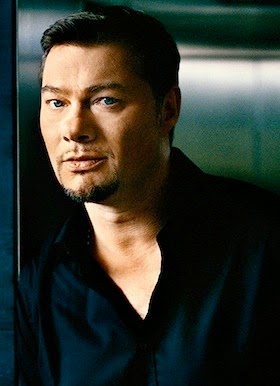 |
 |
| American soprano June Anderson and British mezzo-soprano Sarah Walker singing at the historic event in 1989. |
 |
| Polish-born and German raised tenor Klaus König and German-born of Dutch ancestry bass Jan-Hendrik Rootering sing Beethoven for Bernstein. |
 |
| Lucky collectors were able to get a recording of the event with a piece of the Berlin Wall inside |
↧
AHS Makes Clowns More Terrifying Than Leoncavallo's "Pagliacci"
 |
| John Carroll Lynch plays the murderous kidnapping clown in American Horror Story: Freak Show |
 |
| Even a dandy can turn into an evil clown with the right accessories: Finn Wittrock stars as the twisted Mr. Mott |
 |
| Tears of a Clown: Plácido Domingo as Canio in the opera Pagliacci |
 |
| César Vezzani |
 |
| José Cura |
 |
| Jose Luccioni |
 |
| Allan Glassman |
 |
| Amadeo Bassi |
 |
| André Ferrier |
 |
| Antonello Palombi |
 |
| Assis Pacheco |
 |
| Beniamino Gigli |
 |
| Beno Blachut |
 |
| Bradley Daley |
 |
| Carlo Bergonzi |
 |
| Carlo Guichandut |
 |
| Daniel Sutin |
 |
| David Rendall |
 |
| Dimiter Uzonow |
| Edmond Rambaud |
 |
| Edward Johnson |
 |
| Emil Marinescu |
 |
| Enrico Caruso |
 |
| Eric Audouin |
 |
| Erik Enderlein |
 |
| Ermanno Mauro |
 |
| Ernesto Rodriguez |
 |
| Eugène Regnier |
 |
| Fabio Sartori |
 |
| Fernand Ansseau |
 |
| Fernand Ansseau |
 |
| Fernando de Lucia |
 |
| Francesco Battaglia |
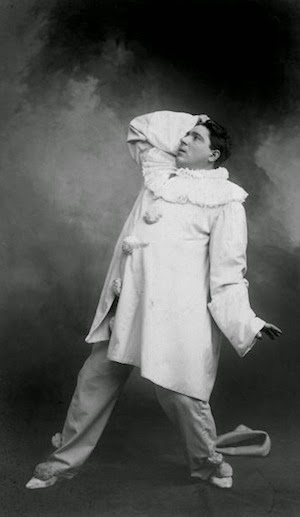 |
| Francesco Fazzini |
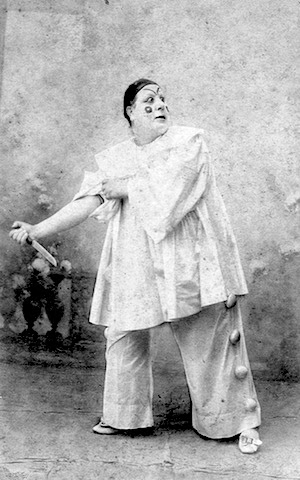 |
| Francesco Signorini |
 |
| Franco Corelli |
 |
| Franz Volker |
 |
| Fritz Windgassen |
 |
| Gé Korsten |
 |
| Giacomo Lauri-Volpi |
 |
| Gilbert Py |
 |
| Giovanni Breviario |
 |
| Giovanni Consiglio |
 |
| Giovanni Martinelli |
 |
| Giuseppe di Stefano |
| Giuseppe Gaudenzi |
 |
| Giuseppe Giacomini |
 |
| Gregory Carroll |
 |
| Gustavo Lopez Manzitti |
 |
| Helge Roswange |
 |
| Herman Malamood |
 |
| James McCracken |
 |
| Jay Hunter Morris |
 |
| Jean Arnold |
 |
| Johan Botha |
 |
| Johannes Sembach |
 |
| Jon Vickers |
 |
| José Carreras |
| Josef Mann |
 |
| Joseph Schmidt |
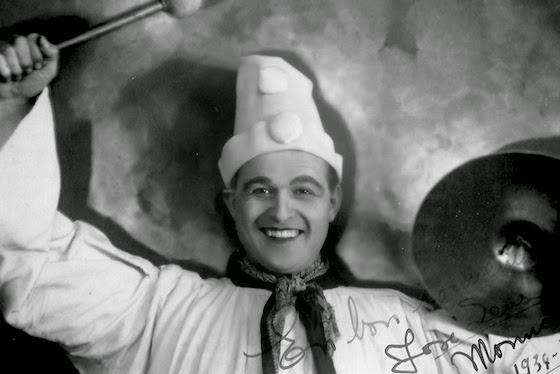 |
| José Lens |
 |
| Jussi Björling |
 |
| Karel Burian |
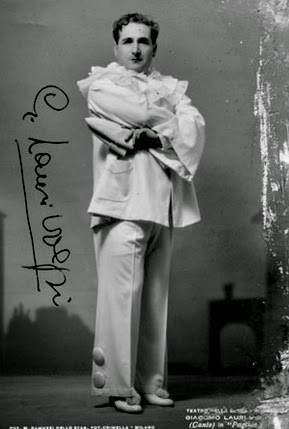 |
| Lauri Volpi |
 |
| Lauritz Melchior |
 |
| Leo Slezak |
 |
| Luciano Pavarotti |
 |
| Marcelo Álvarez |
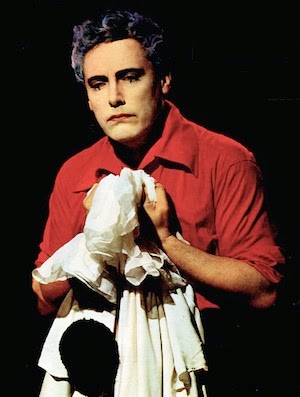 |
| Mario del Monaco |
 |
| Mario Lanza |
 |
| Mario Ortica |
 |
| Max Hirzel |
 |
| Michael Robert Hendrick |
 |
| Miguel Fleta |
 |
| Mihai Muntean |
 |
| Modest Menzinsky |
 |
| Otakar Marak |
 |
| Paul Althouse |
 |
| Pedro Mirassou |
 |
| Philip Mondinos |
 |
| Ramon Vinay |
 |
| Raoul Jobin |
 |
| Ricardo Ledesma |
 |
| Riccardo Martin |
 |
| Richard Kubla |
 |
| Richard Leech |
 |
| Richard Margison |
 |
| Richard Tucker |
 |
| Roberto Alagna |
 |
| Roy Cornelius Smith |
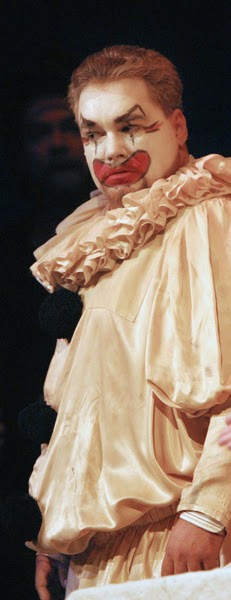 |
| Salvatore Licitra |
 |
| Salvatore Puma |
 |
| Sydney Rayner |
| Théo Beets |
 |
| Thomas Salignac |
 |
| Timo Calio |
 |
| Tony Ponchet |
 |
| Ulysses Lappas |
 |
| Umberto Sorrentino |
| Vasili Damaev |
 |
| Vladimir Atlantov |
 |
| Vladimir Galouzine |
 |
| Yusif Eyvazov |
↧
Dorothea Röschmann Delivers Package Of German Lieder For Sony
"Gefeiert auf den wichtigsten Opernbühnen der Welt - als Susanna, Ännchen, Eva, Fiordiligi, Micäela und in vielen anderen Rollen - ist die deutsche Sopranistin Dorothea Röschmann auch eine der großen Liedinterpretinnen unserer Zeit. Für ihre neue CD wählte sie wunderschöne Lieder von Schubert, Schumann, Strauss und Wolf, die von berühmten Frauengestalten aus Literatur und Geschichte inspiriert wurden. Von Malcolm Martineau gefühlvoll am Klavier begleitet zeichnet sie subtile StimmungsPortraits, welche die fein schattierten Nuancen der Figuren widerspiegeln, die in den Liedern dargestellt werden. Das Ergebnis sind sorgfältig konzipierte, einfühlsam gesungene Miniaturen mit Höhepunkten wie Schuberts 'Gretchen am Spinnrad' und 'Nur wer die Sehnsucht kennt,' Strauss 'Die Nacht' oder 'Morgen' und den Mignon Liedern von Hugo Wolf." [Source] Get more information about the album including track listing, and listen to the samples from the recording, after the jump.
"Dorothea Röschmann releases her new recital album including well known songs by Schubert, Schumann, Strauss and Wolf. She is accompanied by Malcolm Martineau who is recognized as one of the leading accompanists of his generation. 'The idea for this program of female portraits took seed a long time ago, when I was studying in London with the wonderful teacher, Vera Rozsa. I used to make frequent pilgrimages to the extraordinary National Portrait Gallery where one is surrounded by the most imposing portraits of British personalities and royalty, such as the Tudors and Queen Elizabeth I, as well as countless figures from British history – poets, physicians and so on - all concentrated and condensed within the confines of the building. A portrait represents a very intense encounter with a person and you believe you know them better after having studied the picture for some time. It can only give you a glimpse of the personality, but also creates an impression of how the person wanted to be portrayed. In songs, a portrait is the musical interpretation of a fictionalized person from literature (Gretchen, Mignon), or real life (Mary Stuart), but the process of character portrayal and trying to get deeper and deeper through different layers, has to happen musically. As a portrait, it can only attempt to portray a snapshot of all the emotions of the character but the longer you live with a song, the more you find in it, as in all music. This fascination with character interpretation in song and in opera, led to my desire to put together a programme with portraits that reflect the finely shaded nuances of the figures presented here. In the same way, female characters such as Mignon and Gretchen, created by Goethe, and Mary, Queen of Scots, have stimulated the imagination of poets, composers and artists alike. We have included songs by Richard Strauss as every one of them can be regarded as a miniature mood portrait. The original Schubert setting of ‘Gretchens Bitte’ is only a fragment of Goethe’s poem so we have chosen Benjamin Britten’s ‘complete’ version as it gives a more comprehensive characterization of Gretchen.'" [Source]
"Dorothea Röschmann releases her new recital album including well known songs by Schubert, Schumann, Strauss and Wolf. She is accompanied by Malcolm Martineau who is recognized as one of the leading accompanists of his generation. 'The idea for this program of female portraits took seed a long time ago, when I was studying in London with the wonderful teacher, Vera Rozsa. I used to make frequent pilgrimages to the extraordinary National Portrait Gallery where one is surrounded by the most imposing portraits of British personalities and royalty, such as the Tudors and Queen Elizabeth I, as well as countless figures from British history – poets, physicians and so on - all concentrated and condensed within the confines of the building. A portrait represents a very intense encounter with a person and you believe you know them better after having studied the picture for some time. It can only give you a glimpse of the personality, but also creates an impression of how the person wanted to be portrayed. In songs, a portrait is the musical interpretation of a fictionalized person from literature (Gretchen, Mignon), or real life (Mary Stuart), but the process of character portrayal and trying to get deeper and deeper through different layers, has to happen musically. As a portrait, it can only attempt to portray a snapshot of all the emotions of the character but the longer you live with a song, the more you find in it, as in all music. This fascination with character interpretation in song and in opera, led to my desire to put together a programme with portraits that reflect the finely shaded nuances of the figures presented here. In the same way, female characters such as Mignon and Gretchen, created by Goethe, and Mary, Queen of Scots, have stimulated the imagination of poets, composers and artists alike. We have included songs by Richard Strauss as every one of them can be regarded as a miniature mood portrait. The original Schubert setting of ‘Gretchens Bitte’ is only a fragment of Goethe’s poem so we have chosen Benjamin Britten’s ‘complete’ version as it gives a more comprehensive characterization of Gretchen.'" [Source]
↧
Uncovering Elena Obraztsova Treasures As 75 Years Is Celebrated
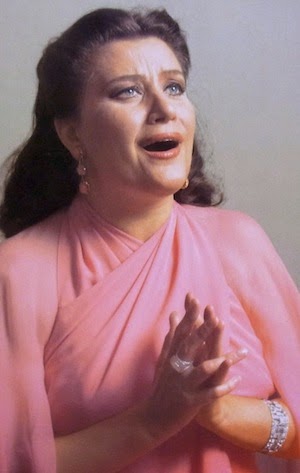 |
| Operatic Tsaritsa: The legendary Elena Obraztsova |
 |
| One of the prized solo recordings to make a commercial release worldwide. |
 |
| Elena Obraztsova stands center stage as international opera stars pay hommage last week. |
Click on the covers to listen to excerpts
and purchase each album:
and purchase each album:
"Elena Vasiliyevna Obraztsova (Russian: Елена Васильевна Образцова) (born July 7, 1939 in Leningrad, Soviet Union) is a Russian mezzo-soprano, widely recognised as one of the greatest opera singers of all time, thanks to her outstanding stage presence and the vocal abilities. As a child Obraztsova lived in Leningrad through the long siege (August 1941-January 1943) during World War II. In 1954-1957 Obraztsova studied in the Tchaikovsky musical college in Taganrog and frequently participated in concerts onstage of Taganrog Theatre. In 1957-1958 Obraztsova studied in Rostov on Don's music school. In August 1958 Yelena Obraztsova passed the examinations and became a student at the Leningrad Conservatory. In 1963 she was invited to perform in a Bolshoi Theater production of Boris Godunov in Moscow. Her introduction to the opera houses of Europe and the world was a recital in the Salle Pleyel in Paris. She has played many roles throughout her career, including performances under the baton of such leading conductors as Claudio Abbado and Herbert von Karajan. In December 1977 she opened the 200th opera season in La Scala singing Don Carlos's Eboli with Abbado as conductor. In 1978 she played the title role of Carmen opposite Plácido Domingo in Franco Zeffirelli's television production of the opera. She also appeared as Santuzza in Zeffirelli's film version of Cavalleria rusticana in 1982. On 27 December 1990 she was awarded the title of the Hero of Socialist Labor (mark of distinction - 'Hammer and Sickle; gold medal ), Order of Lenin by the President of USSR for her contribution to the development of Soviet Music. In June 2007 Obraztsova was appointed artistic director of opera at the Mikhaylovsky Theatre in St. Petersburg. She also trains young soloists in her own cultural center in St. Petersburg. Obraztsova still appears regularly on stage at the Mikhailovsky in the role of the Countess in Tchaikovsky's The Queen of Spades. In 2008 Obraztsova ended her artistic director contract with the Mikhailovsky to concentrate on the competition of her name and the recently announced project of International Academy of Music in St Petersburg. Obraztsova continues her collaboration with the Mikhailovsky in a capacity of the General Director's Artistic Advisor. On 7 July 2009, Obraztsova's 70th birthday was marked with a special program at the Mikhailovsky Theater that included ballet performances, opera arias, excerpts from films, and jazz and piano recitals. Elena Obraztsova expresses her support for the International Delphic Games. Greetings with her signature came to the III Delphic Games 2009 in Jeju / South Korea, under the motto 'In Tune with Nature,' and to the IV Junior Delphic Games 2011 in Johannesburg / South Africa with their motto 'Provoke, Innovate, Inspire.'" [Source]
PRIZES and AWARDS
Glinka State Prize of the RSFSR (1st prize) (1962)
1970 - Viñas prize (1st prize, International Vocal Competition in Barcelona)
Honoured Artist of the RSFSR
1970 Tchaikovsky prize (1st prize)
Order of the Red Banner of Labour, twice (1971, 1980)
Glinka State Prize of the RSFSR - for concerts and theatrical activities 1971-1972 period (1973)
People's Artist of the RSFSR (1973)
Lenin Prize - for concert programs in 1973-1974 and the roles of Froska, Carmen, Azucena in the Operas "Simeon Kolko", Prokofiev's "Carmen" by Bizet, "Il Trovatore" by Verdi (1976)
People's Artist of USSR (1976)
Hero of Socialist Labour (27 December 1990) - for outstanding contributions to the development of Soviet musical art
Order of Lenin (27 December 1990)
Order of Merit for the Fatherland, 3rd class (17 June 1999) - for outstanding contribution to the development of musical art
Casta Diva prize (2002)
Order of Merit for the Fatherland, 2nd class (10 June 2009) - for outstanding contribution to music and many years of fruitful creative activity
Order of the Holy Prince Daniel of Moscow, 1st class (Russian Orthodox Church, 2009) - in consideration of his labours for the good of the Church and in connection with her 70th birthday
↧
↧
Regardez Tout Le Gala Du Tricentenaire De l'Opéra Comique
Watch the entire gala celebrating 300 years of the l'Opéra Comique with opera stars Anna Caterina Antonacci, Sabine Devieilhe, Patricia Petibon, Julie Fuchs, Stéphane Degout, and more. "Carmen, Lakmé, Pelléas et Mélisande, La Fille du régiment... Autant de chefs d'oeuvre de l'art lyrique nés sur les planches de l'Opéra Comique. Depuis sa création en 1715, cette prestigieuse maison fait rayonner l'opéra à la française, accueille des artistes de renom, programme des oeuvres de tous les répertoires. Un lieu chargé d'histoires que cette soirée de gala ambitionne de résumer. A grand renfort d'images d'archives, d'interventions et bien évidemment de chants, apprêtez-vous à voir défiler trois siècles de création artistique. En maître de cérémonie, Michel Fau. Avec son impertinence habituelle, l'homme de spectacle redonnera vie aux petits et grands moments de la célèbre institution. A ses côtés, chanteront Anna Caterina Antonacci, Sabine Devieilhe, Julie Fuchs, Patricia Petibon, Frédéric Antoun, Stéphane Degout et Vincent Le Texier. Des chanteurs d'envergure internationale, familiers de la Salle Favart, qui interprèteront les airs qui ont marqué l'Opéra Comique et l'art lyrique en général. Ils seront accompagnés dans ce voyage dans le temps par Jérôme Deschamps, des chanteurs de l'Académie de l'Opéra Comique, le choeur Accentus et l'orchestre Les Siècles dirigé par François-Xavier Roth. « Si l’Opéra Comique m’était conté », une soirée exceptionnelle pour un lieu qui l'est tout autant. Le 28 décembre, Arte diffusera une version enrichie de ce Gala du tricentenaire. Sujets documentaires et témoignages viendront s'ajouter à la captation du 13 novembre. La soirée sera également diffusée en direct sur France Musique." [Source] More photos and the video are after the jump.
↧
Natalie Dessay Basking In The Glow Of Her Second Singing Career
 |
| No High Notes Required: Natalie Dessay sings with the band at Château de Versailles |
savouring the delights of the Baroque, and moving with equal aplomb from comic opera to bel canto and from French art song to French (and Brazilian) pop song. An uncommonly human Queen of the Night in Die Zauberflöte, she has sparkled lovingly in Lakmé and descended into harrowing madness as Ophélie and Lucia di Lammermoor; and just as she has brought Manon to vivid life, she has experienced all Violetta’s passion and pain in La traviata. With her shining eyes, Dessay is a tiny slip of woman who radiates charisma. She has often taken a stand against operatic convention and diva clichés, impudently daring to talk about the trials of her profession, including stagefright and the frantic demands of juggling the roles of star, woman and mother. Then there is her recurring frustration at the essential mismatch between a dramatic temperament suited to the great tragic heroines and a voice predisposed to the roles of singing doll or willing victim. But though her voice has always been light, it has never been lacking in juice, and the purity of her top notes – cleaving like daggers – her quicksilver virtuosity, and her supreme musicianship have given her the power to cast an irresistible spell. It took years for her to accept herself for what she had always been. In 1997, when she told an interviewer that 'There is more
to life than top notes', people thought she was being precious; she was in fact expressing profound disquiet. Over the course of a career that imposed operations on her vocal cords in 2003 and 2005, Dessay has come to the conclusion that 'the interplay of physiological skills and characterisation is as about as thrilling as something can get.' A perfectionist who is also prone to impulse, this great French singer has brought something new to her roles through her still unfulfilled passion for the straight theatre, an art form that remains a defining force for her: it was, after all, as a student actress that she first discovered her talent as a singer. She has now succeeded in resolving the dichotomies within her, uniting her personality and her voice by choosing to move away from opera. Since 2013 she has reinvented herself with recitals of French art song (notably Debussy with the pianist Philippe Cassard), with popular song and musicals (above all in her collaboration with the pianist and composer Michel Legrand), and even with Brazilian music (in the company of three sisters-under-the-skin, the singers Helena Noguerra and Agnès Jaoui and the guitarist Liat Cohen). Her commitment to each genre has been characteristically unreserved. Of one thing we can be sure: Natalie Dessay, in all her
infinite artistic variety, has many more delicious surprises in store." [Source] And out soon is a new DVD of the chanteuse in concert: "Two icons of French song – Natalie Dessay and Michel Legrand – follow the huge worldwide success of their album Entre Elle et Lui with a DVD of the very special concert on the 11th June 2014 at the Orangerie of the Château de Versailles. This is a unique collaboration from two giants of French music. The CD release in 2013 was hotly anticipated and received great critical acclaim upon its release. Natalie Dessay brings her lyrical voice and fresh interpretations to a selection of some of Michel Legrand’s best-loved songs including 'La Valse des Lilas', 'Les moulins de mon cœur' (Windmills of Your Mind), 'Duo de Guy et Geneviève', 'Papa Can You Hear Me' and many more." [Source] Watch highlights from the concert, and see a few more photos, after the jump.
 |
| Dessay à la Streisand: The soprano sings "Papa can you hear me?" |
↧
Patroness Gets Opera Center Named After Her By Madison Opera
 |
| Helping the Arts: A photo of Margaret C. Winston in the 1940s at Stanford University |
 |
| Kathryn Smith, General Director of Madison Opera, sits in The Margaret C. Winston Opera Center |
↧
Photo Flashback: Leona Mitchell, Renata Scotto, Virginia Zeani, Tito Capobianco
"Soprano soars at Museum of Art Fort Lauderdale. No, it was not the Met. It was the modest stage of the Horvitz Auditorium in Fort Lauderdale – but it was clear to hear from her intimate concert there last night how soprano Leona Mitchell could have held sway for 18 consecutive seasons from the grand stage of that renowned New York opera house. Mitchell, the Met’s leading spinto-soprano beginning with her 1975 debut in Carmen, performed as part of Venetian Arts Society’s Up Close and Personal series at the Museum of Art in Fort Lauderdale, which featured last night’s salon concert and reception with a master class and conversation with the artist Friday morning (2/21) at 10 a.m. The dramatic mastery of her still-soaring voice – especially a rapturous vibrato in the higher registers – shone brightest in the selection of arias sung in various languages, but she also enchanted with spirituals and standards like 'Summertime,' the mere introduction of which elicited 'aahs' from the highly appreciative audience. Another crowd-pleaser was her interpretation of the habanera from Bizet’s Carmen. Because she played the role of Micaela, this most familiar of arias was never hers to sing at the Met; but she makes up for it beautifully now in her many recitals. Wearing her signature red wrap, the soprano was accompanied exuberantly on piano by Dr. Robert Sharon of Palm Beach Atlantic University. The evening was graced by the attendance of three of opera’s superstars: stage director Tito Capobianco, and Legendary Prima Donnas Virginia Zeani and Renata Scotto." [Source] In addition to the selections mentioned, the evening's program included arias from Tosca, La Forza del Destino, Die Tote Stadt, Rusalka, Otello; songs by Rodrigo and Duparc; and spirituals.
 |
| Leona Mitchell during the recital in Fort Lauderdale at the Museum of Art |
↧
↧
Sonya Yoncheva Heralded As Mimì At MET By New York Times
 |
| Ms. Yoncheva in rehearsal (Photo: Jonathan Tichler/MET Opera) |
 |
| As the delicate Puccini character Mimì in La Bohème, Sonya Yoncheva receives a triumphant review. |
↧
A Soubrette Dilemma: Where Have All The Pretty Voices Gone?
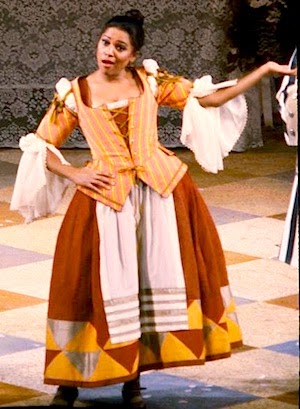 |
| Kathleen Battle sang the soubrette role of Despina in Mozart's Così fan tutte during January 1982 at the MET. (Photo: Winnie Klotz/Metropolitan Opera) |
 |
| Vocal Spectrum: Anna Netrebko as Adina* [top] and Lady Macbeth** [bottom]. (Photos: Ken Howard* & Marty Sohl**/Metropolitan Opera) |
 |
| 19th-Century Coquette: Marcella Sembrich sang Rosina in Rossini's Il Barbiere di Siviglia at the Metropolitan Opera in 1883. (Photo: Erwin Raupp/Dresden) |
 |
| Light Lyric: Brazilian soprano Bidú Sayão balanced the roles of Adina, Susanna, Zerlina, with the heavier lyric repertoire of Mimì, Gilda, and Manon, during the 1930s-1950s at the Metropolitan Opera. |
LISTENING SAMPLES:
 |
Elisabeth Schumann "Deh vieni non tardar" Le Nozze di Figaro Mozart |
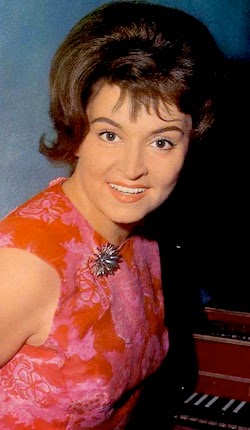 |
Rita Streich "Kommt ein schlanker Bursch gegangen" Der Freischütz Weber |
 |
Mattiwilda Dobbs "Batti, batti, o bel Masetto" Don Giovanni Mozart |
 |
Norma Burrowes "Durch Zärtlichkeit und Schmeicheln" Die Entführung aus dem Serail Mozart |
 |
Reri Grist "Una voce poco fa" Il Barbiere di Siviglia Rossini |
 |
Patrice Munsel "Mein Herr Marquis" [sung in English] Die Fledermaus J. Strauss II |
 |
Graziella Sciutti "Quel guardo il cavaliere...So anch'io la virtu magica" Don Pasquale Donizetti |
Edith Mathis "Se il pardre perdei" Idomeneo Mozart |
 |
Lucia Popp "Oh war' ich schon mit dir vereint" Fidelio Beethoven |
 |
Helen Donath "Ein Männlein steht im Walde" [with Anna Moffo as Hänsel] Hänsel und Gretel Humperdinck |
Elly Ameling "Vedrai, carino" Don Giovanni Mozart |
 |
Judith Blegen "Vorrei spiegarvi, o Dio, K.418" Mozart |
 |
Ileana Cotrubas "Prendi Prendi, per me sei libero" L'elisir d'Amore Donizetti |
 |
Kathleen Battle "Quel guardo il cavaliere...So anch'io la virtù magica" Don Pasquale Donizetti |
Sylvia McNair "Alla selva, al prato" Il re pastore Mozart |
 |
Dawn Upshaw "Ach, ich fühl's" Die Zauberflöte Mozart |
 |
Barbara Bonney "Sul fil d'un soffio etesio" Verdi Falstaff |
 |
Heidi Grant Murphy "L'ho perduta... me meschina!" Le Nozze di Figaro Mozart |
 |
Danielle de Niese "Una donna a quindici anni" Così fan tutte Mozart |
 |
Mojca Erdmann "Ruhe sanft, mein holdes Leben" Zaide Mozart |
To get a sense of what type of soprano has sung these roles over the years, look no further than the archives of the Metropolitan Opera for a cast sampling:
Adina (L'elisir d'Amore by Donizetti)
Bidú Sayão
Bidú Sayão
Elisabeth Söderström
Mirella Freni
Sona Ghazarian
Hei-Kyung Hong
Youngok Shin
Ruth Ann Swenson
Angela Gheorghiu
Diana Damrau
Anna Netrebko
Rosina (Il Barbiere di Siviglia by Rossini)
Amelita Galli-Curci
Amelita Galli-Curci
Lily Pons
Patrice Munsel
Roberta Peters
Costanza Cuccaro
Erie Mills
Carmen Oprisanu
Despina (Così fan tutte by Mozart)
Lucrezia Bori
Lucrezia Bori
Patrice Munsel
Roberta Peters
Teresa Stratas
Mariella Devia
Julia Hamari
Betsy Norden
Cecilia Bartoli
Nuccia Focile
Danielle de Niese
Pamina (Die Zauberföte by Mozart)
Jarmila Novotna
Jarmila Novotna
Eleanor Steber
Lucine Amara
Gloria Davy
Anna Moffo
Judith Raskin
Teresa Zylis-Gara
Pilar Lorengar
Benita Valente
Leona Mitchell
Lucia Popp
Marvis Martin
Joyce Guyer
Joan Rodgers
Barbara Bonney
Angela Maria Blasi
Esther Heideman
Lisa Milne
Isabel Bayrakdarian
Susanna Phillips
Heidi Stober
Sophie (Der Rosenkavalier by Strauss)
Eleanor Steber
Eleanor Steber
Erna Berger
Hilde Güden
Nadine Conner
Anneliese Rothenberger
Elisabeth Söderström
Edith Mathis
Laura Aikin
Christine Schäfer
Erin Morley
Norina (Don Pasquale by Donizetti)
Hilde Güden
Roberta Peters
Reri Grist
Adriana Maliponte
Beverly Sills
Gail Robinson
Anna Netrebko
Rachelle Durkin
Adele (Die Fledermaus by J. Strauss II)
Patrice Munsel
Patrice Munsel
Roberta Peters
Laurel Hurley
Patricia Welting
Judith Blegen
Gail Dobish
Barbara Kilduff
Harolyn Blackwell
Janet Williams
Elizabeth Norberg-Schulz
Rosemary Joshua
Marlis Petersen
Jane Archibald
Zerlina (Don Giovanni by Mozart)
Marcella Sembrich
Marcella Sembrich
Fritzi Scheff
Geraldine Farrar
Editha Fleischer
Marita Farell
Bidú Sayão
Nadine Conner
Genevieve Warner
Laurel Hurley
Teresa Stratas
Rosalind Elias
Jeanette Scovotti
Judith Raskin
Jeannette Pilou
Huguette Tourangeau
Roberta Alexander
Maria Ewing
Dawn Upshaw
Myra Merritt
Ruth Ann Swenson
Hei-Kyung Hong
Maria Bayo
Rebecca Evans
Anna Netrebko
Camilla Tilling
Isabel Bayrakdarian
Magdalena Kozená
Isabel Leonard
Mojca Erdmann
Ekaterina Siurina
Susanna (Le Nozze di Figaro by Mozart)
Frieda Hempel
Frieda Hempel
Bidú Sayão
Licia Albanese
Frances Greer
Irmgard Seefried
Dolores Wilson
Hilde Güden
Elisabeth Söderström
Anneliese Rothenberger
Mirella Freni
Benita Valente
Marie McLaughlin
Barbara Bonney
Heidi Grant Murphy
Cecilia Bartoli
Joyce Guyer
Korliss Uecker
Dorothea Röschmann
Andrea Rost
Lisa Milne
Lisette Oropesa
Ekaterina Siurina
Danielle de Niese
Blonde (Die Entführung aus dem Serail by Mozart)
Pierrette Alarie
Pierrette Alarie
Mimi Benzell
Norma Burrowes
Kathleen Battle
Judith Blegen
Erie Mills
Barbara Kilduff
Jennifer Welch-Babidge
Aleksandra Kurzak
Echo (Ariadne auf Naxos by Strauss)
Jeanette Scovotti
Jeanette Scovotti
Joy Clements
Betsy Norden
Marvis Martin
Gail Robinson
Korliss Uecker
Alexandra Deshorties
Nicole Heaston
Erin Morley
Lei Xu
Ännchen (Der Freischütz by Weber)
Bella Alten
Bella Alten
Queena Mario
Ellen Dalossy
Editha Fleischer
Edith Mathis
Nannetta (Falstaff by Verdi)
Zélie de Lussan
Zélie de Lussan
Lola Beeth
Frances Alda
Marisa Morel
Licia Albanese
Judith Raskin
Jeanette Scovotti
Judith Blegen
Benita Valente
Mariella Devia
Barbara Bonney
Heidi Grant Murphy
Camilla Tilling
Lisette Oropesa
Gretel (Hänsel und Gretel by Humperdinck)
Teresa Stratas
Teresa Stratas
Christine Weidinger
Carol Malone
Catherine Malfitano
Gail Robinson
Betsy Norden
Judith Blegen
Dawn Upshaw
Clare Gormley
Christine Schäfer
Miah Persson
Aleksandra Kurzak
Oscar (Un Ballo in Maschera by Verdi)
Stella Andreva
Stella Andreva
Frances Greer
Pierrette Alarie
Roberta Peters
Laurel Hurley
Jeanette Scovotti
Joy Clements
Judith Blegen
Harolyn Blackwell
Sumi Jo
Heidi Grant Murphy
Elizabeth Norberg-Schulz
Youngok Shin
Lyubov Petrova
Kathleen Kim
↧
Grace Bumbry Will Perform To Honor Martin Luther King Jr.
 |
| La Bumbry: The legend will make a rare appearance for this celebratory concert in New York City this January. |
↧
Happy Thanksgiving From Mary Garden And Her Native Friends
 |
| "The Chiefs and the Prima Donna" (Photo: Underwood & Underwood) |
"The time is 1820, under the Spanish régime. The scene of Act I is laid on the Island of Santa Cruz, two hours' sail from the mainland. Act II takes place in the plaza of the town of Santa Barbara on the mainland, in front of the Mission Church. Act III represents the interior of the Mission Church. At the beginning of the opera Don Francisco is awaiting the return from a convent of his only child, Barbara. His reverie is interrupted by the arrival of Alvarado and his comrades Castro, Pico, and Kagama. Alvarado wishes to marry his cousin Barbara in order to gain possession of the estates left to her by her mother. Caster is a half-breed. Pico and Kagama are vaqueros and hunters. All three have come to the island ostensibly for a wild-boar hunt, but Alvarado has timed his arrival with the return of his cousin. Lieutenant Paul Merrill, an American naval officer, and Natomah, a pure-blooded Indian girl, appear together at the back of the stage. His ship has dropped anchor in the Bay of Santa Barbara. Natomah has never seen an American before and she is fascinated by him. She tells him of a legend of her people. She is the
 |
| Mary Garden as Natomah |
"Natoma is a 1911 opera with music by Victor Herbert, famous for his operettas, and libretto by Joseph D. Redding. It is a serious full-scale grand opera set in Santa Barbara, California in the "Spanish days" of 1820; the story and music are colored by "Indian" (Native American) and Spanish themes. It premiered in Philadelphia at the Metropolitan Opera House on February 25, 1911 and was later mounted at the New York Metropolitan Opera House on February 28, 1911. Herbert stated that 'I have tried to imitate Indian music. But I have used no special Indian theme. Indian themes are all very short and unharmonized. I have tried to get the effect of Indian music without using the thing itself. It is the same with some of the Spanish music which occurs in the score. There is Spanish coloring, but I have taken no special Spanish themes to start with.' Natoma was not quite the first American opera to be performed at the Metropolitan Opera—that honor belonged to The Pipe of Desire by composer Frederick Shepherd Converse and librettist George Edward Barton, which premiered March 18, 1910 — and in calling it an 'American' opera, some newspapers quibbled about Herbert's Irish origin. Nevertheless, great anticipation preceded the premiere of this 'American' opera with an English-language libretto, which featured first-rank stars Mary Garden and John McCormack and an unstinted production. (The production, in both Philadelphia and New York, was mounted by the Chicago Grand Opera Company, which did not present it in Chicago because the opera house there was fully booked for the season). Prior to the premiere the Times carried numerous articles, one being a full-page
| Composer Victor Herbert autographed his portrait with a notation from the opera. |
by Barbara Graichen
The first settlers arrived in the Sacramento Valley as early as 8,000 years ago. The earliest evidence of them in Sacramento County is found along the Cosumnes River near Rancho Murieta where crude stone tools were recovered from gravels estimated to be 12,000-18,000 years old. The first Natomas residents, sometimes called the Windmillers, were mainly hunters. They established villages in Natomas about 4,500 to 5000 years ago. However, some of the sites have not been fully evaluated so they may be older. Around four thousand years ago, the activities, language and cultural habits of Natomas residents changed. People began to spend more time gathering the abundant and tasty native food found in Natomas. They baked, made jewelry from shells, stones and crystals, and traded pelts and food for beads, obsidian, chert, greenstone, quartz, slate, and other materials not found in Natomas. By 500 A.D., the Maidu-Nisenan culture was firmly established. Many people were living in villages along the Sacramento and American Rivers along western and southern Natomas, and Dry and Auburn Ravine Creeks to the east and north. By the 1800s, over 100,000 native peoples lived in the Central Valley. As many as 10,000 Maidu-Nisenan people lived in Natomas. In 1832, John Work counted 1,500 people living at the confluence of the Sacramento and Feather Rivers near present day Verona. These people, the Maidu, gave Natomas its name. "Natomas" is a Maidu word meaning north place or upstream people. The Maidu were a branch of the Nisenan people. The word, "Nisenan," means our people or among us. Most of the Natomas Maidu lived on natural levees or high ground along our rivers and creeks. There were at least six villages along the American and Sacramento Rivers from Northgate Boulevard to Verona. They were called Wollack (near Verona), Leuchi, Nawrean (west of Power Line Road), Wishuna, Totola (in northern Natomas), and Pusune (southern Natomas). Other settlements were located along Dry Creek in eastern Natomas, and Auburn Ravine Creek in northern Natomas. Remnants of villages, cemeteries, ceremonial grounds, trading sites, fishing stations, seasonal camps and river crossings still remain in Natomas. Their locations are kept hidden from the public so they won't be disturbed. There have been several archaeological digs in Natomas, and beautiful pottery and other items from sites, like the now destroyed Bennet Mound (west of Power Line Road), are on display in various California museums. Natomas was considered the best place to live in Western North America because of the mild climate and abundant year round food resources. It was a bit like paradise, here. There was no need to work hard raising crops, tending livestock or going to work every day. There was ample shade in the forested areas. Rivers, creeks, ponds and lakes teemed with Salmon, Steelhead Trout, Tule Perch, crawdads, ducks, geese, turtles, mussels, freshwater clams and bullfrogs. Grasslands and forests supported pheasants, rabbits, doves, and quail. Elderberries, grapes, onions, sweet potatoes, sunflower seeds, pine nuts, brodiaea bulbs, carrots, lettuce, potatoes, blackberries, nuts, roots and tubers, and grains grew wild in Natomas. They were easy to find and gather. There were forests and herds of elk, pronghorn antelope, and deer. Early explorers (Yount, 1837) wrote that the deer, antelope and elk were so tame that people could walk amid them without startling them. The Maidu built granaries and made or traded milling equipment, mortars and pestles, baskets, harpoons, fish spears, bows and arrows, quivers, mats, pipes, nets, ropes, antler wedges, balsa canoes, obsidian knives, and other stone tools. Villages or groups of villages were organized into a tribelet under the authority of a "headman." The office could be elected but was usually hereditary. The main functions of the headman were to settle disputes, host visitors, and oversee other activities. Maidu villages generally had 3-7 houses although larger villages housed up to 200-300 people. Dwellings were 10-15 feet in diameter and generally dome shaped. They were covered with bark or brush and placed over slight depressions. This kept residents very cool during hot Natomas summers. People also built 30 foot diameter or larger round houses for dances, gatherings and ceremonies. Natomas was a peaceful and marvelous place to live. Unfortunately, paradise was lost. In 1832, a group of Hudson Bay Company workers brought malaria to Natomas. Within a few months, seventy-five percent of Natomas' residents died. The gold rush brought miners and settlers, some of whom destroyed villages, killed people or forced them into slave labor. Many other Maidu people died of measles, consumption or from horrible working conditions. The herds of antelope, elk and other large mammals disappeared. Place names, like Elkhorn Boulevard and Natomas, provide some of the only reminders of Natomas' first settlers and the natural environment in which they lived. Perhaps, our "new" Natomas residents can think of ways to remember and honor those who came before us. If you would like to learn more about Natomas' history, help preserve and document our history and/or meet a lot of fascinating people, call 419-0509 (Natomas Historical Society).
by Barbara Graichen
Take a moment and imagine what Natomas was like twenty years before the gold rush. In those days, dozens of creeks and streams drained the eastern valley or Sierra foothills and meandered through Natomas. Some streams emptied into a motley assortment of year round lakes and marshes that were scattered throughout our basin. Others made it all the way to the big rivers. Herds of deer and antelope, fattened on lush grasses, tules and marsh plants, roamed the lowlands of Natomas. Salmon, Steelhead and other fish were abundant as were the plump water birds. River otter feasted on fresh water clams. Forests of huge oak and cottonwood trees were visible in every direction. This was the place that thousands of native Maidu-Nisenan people called home. Many made their homes on the natural levees that paralleled the Sacramento and American Rivers and Natomas’ larger creeks. Other natives simply enjoyed hunting and fishing trips along our creeks and streams. It was a bit like paradise. Times changed. By the early 1900s, an urge to farm or sell land for profit caused the promotion of remarkable plans to drain the land. Landowners and residents reacted favorably to expensive engineering proposals to tame the rivers and creeks that flooded the basin. Dreams turned into an enormous land reclamation effort that caused Natomas to earn national renown as "the Holland of California." Lakes and marshes were drained. Natural creeks were captured in canals, with portions of their channels shunted in unfamiliar directions. Between May 1912 and December 1914, a ring of levees rose around 55,000 acres of land blocking the natural waterways that once crossed the great basin. Our streams became captive creeks; at best called sloughs; at worst drainage canals. Some local residents and groups have decided that it’s time to begin to acknowledge our natural heritage by changing the name of the Natomas East Main Drain Canal (NEMDC), the eastern boundary of Natomas, to Steelhead Creek. Reasons vary. Some people simply don’t like the official name because it brings concrete to mind rather than wildlife viewing and recreation. Some, like County Parks Commissioner, Bob Bastian, think that it helps people focus on a local recreation opportunity. "The ponds just north of Sorento Road are a great place to spend a Sunday morning fishing with my son!” he said. “Two weeks ago, we saw Canadian Geese, Mallards and a variety of other birds." Many Natomas residents who support the new name want more people to appreciate the area’s history and learn about wildlife that live in and near the creek. Valley View Acres resident, Jeanie Brower, remembers her brother catching Steelhead in the NEMDC. Jack Alvarez remembers sitting under the old Sorento Road Bridge catching Black Bass while waiting for his future wife to finish dinner. Seventy-two year old Lou Lawrence relates stories from his boyhood when friends caught Steelhead in what they then called Steelhead Creek.Some people, like me, remember year round water in the northern NEMDC and more trees. We want others to share our vision of a restored creek. Most younger residents have only seen Steelhead Creek’s degraded northern channel and few people realize that the beautiful stream that enters the Sacramento River on the north side of Discovery Park in the American River Parkway is actually the NEMDC! Many of the volunteers who helped breathe life into the Ueda Parkway, like equestrian Mike Harriman, look forward to riding horses or bicycles on the many miles of trails planned to be constructed beginning in spring 2001. They would like to see more shaded trails. Many, like Beverly Dir, enjoy seeing the trees and shrubs that have already been planted and would like to see more. "The name 'Steelhead Creek' may serve as a reminder that captive Natomas streams can provide opportunities for education, wildlife viewing and recreation." said Alta Tura, president of the Sacramento Urban Creeks Council. "They need to be kept clean and attractive for wildlife and for us." The State passed SB 2261, which requires that, the State Department of Fish and Game double the natural production of Steelhead. Perhaps Natomas can further efforts to obtain state and federal dollars for restoring and enhancing Steelhead and Salmon fisheries in our creeks by supporting the new name for the NEMDC. This could mean more scenic places for picnicking, fishing and other recreation.
Steelhead were once abundant in central California streams from Mexico to Oregon including Dry Creek and the NEMDC. For years, no one saw any Steelhead in our smaller creeks (Salmon runs continue in low numbers). In recent years, residents and scientists have begun to report Steelhead sightings. A Steelhead Trout is often called a Rainbow Trout that has the urge to travel to the sea. An adult Steelhead has a bluish back, silvery side, and small, sharply defined spots on the head, back, and sides, and on dorsal and tail fins. In fresh water, a reddish stripe can usually be seen from head to tail. Steelhead average 2 to 15 lbs. Six lbs. is considered large although a few have reached 40 lbs. Like the salmon that inhabit Steelhead (proposed) and Dry Creeks, Steelhead usually return to spawn in the upstream gravels where they were spawned. However, they do not die after spawning. Counts taken between 1943 and 1947 indicate that local Steelhead generally migrated in the spring although many Steelhead migrate between October and April. Young Steelhead spend from one to two years in fresh water before returning to the ocean. The ideal spawning location for a Steelhead is slower moving water with 2 to 14 inch depths available for babies (fry) and juveniles. Year round water temperatures need to remain below 60 degrees making Dry Creek’s spring fed upstream and higher elevation locations suitable habitat. [Source]
↧
↧
Diva Renée Fleming Gets Captured By Rock Band KISS At Parade
↧
Artwork For Sonya Yoncheva Debut Album On Sony Classical Revealed
You can pre-order the album by clicking here. Compare and contrast this cover with a series of other memorable label-debut albums of artists from the last 30 years.
↧
Support Coloraturafan On Crowdfunding Platform GoFundMe
Known to YouTube watchers as Coloraturafan, Dylan is now starting a campaign to fund a new video venture: "I am looking to expand my video collection to include a new segment 'A chat with Coloraturafan.' With this new project includes the necessity to produce my own videos, which means I need to invest and spend. In order to expedite the process I am starting a GoFundMe account. This future venture will include video segments where I interview people in the Opera Industry (singers, directors, conductors, designers, fellow fans) in order to further explore this wonderful art that I love so much, and I hope that the videos will prove both entertaining and informative to the viewers of my channel." With over 16,000 subscribers to his YouTube channel and thousands of videos posted, this young man deserves major support. Make a donation by clicking here. Watch his video after the jump.
↧



















































